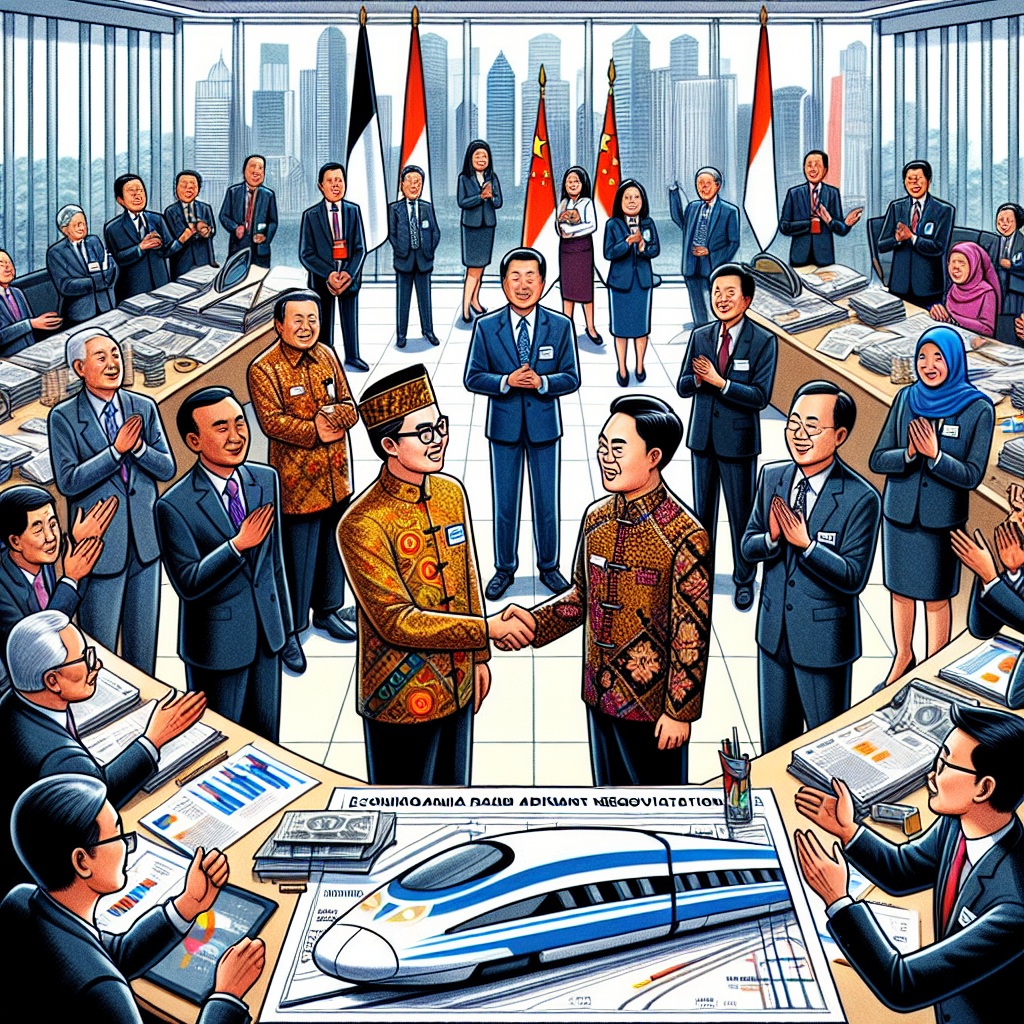The Indonesian government is currently engaged in urgent debt negotiations with Beijing over its 73 billion dollar “Whoosh” high-speed rail project. This high-speed rail project, supported by loans from the Chinese Communist Party, has been running at a loss since its commercial operations began, potentially plunging Jakarta into a “debt trap”.
The railway line connecting the capital Jakarta to the third-largest city Bandung was jointly developed by state-owned enterprises of both countries as a flagship project of the so-called Belt and Road Initiative, with the personal intervention of Chinese leader Xi Jinping and former Indonesian President Joko Widodo. Three-quarters of the project’s funding came from Beijing’s loans, yet after only two years of operation, it has already encountered severe financial difficulties.
According to the Financial Times, financial data shows that the Indonesian consortium holding 60% of the high-speed rail project reported losses of nearly 42 trillion Indonesian Rupiah (approximately 2.53 billion US dollars) last year and an additional 16 trillion Indonesian Rupiah (about 1 billion US dollars) in the first half of 2025. Chinese state-owned enterprises own the remaining 40% stake in the project.
Bobby Rasyidin, the CEO of the Indonesian state-owned railway operator and largest shareholder in the consortium, candidly referred to the project as a “time bomb” during a parliamentary hearing.
During a hearing in August, lawmaker Darmadi Durianto revealed that the actual passenger volume for the high-speed rail was only one-third of the expected amount.
The underwhelming popularity of this high-speed rail project is evident. Despite covering a distance of 145 kilometers in just 45 minutes, the stations are far from city centers, and ticket prices are steep. The cheapest one-way ticket costs 250,000 Indonesian Rupiah (15 US dollars), more than five times the price of a regular slow train ticket, posing a challenge for ordinary citizens with an average monthly salary ranging between 187-190 US dollars.
In the face of increasing financial pressures, Indonesian Investment Minister Rosan Roeslani stated that Jakarta is seeking a “comprehensive” debt restructuring to prevent “future default situations”.
With the debt guaranteed by the state and against the backdrop of President Subianto’s large-scale spending plans, the difficulties brought by the Chinese-financed high-speed rail project may further strain Indonesia’s finances.
Finance Minister Purbaya Yudhi Sadewa has ruled out the possibility of using national funds to directly aid the project. Currently, the newly established sovereign wealth fund Danantara is in negotiations with Beijing to find a solution.
Eko Listiyanto, Deputy Director of the Institute for Economic and Financial Development of Indonesia, stated that doubts have surrounded the project since the planning stage, including the necessity of building a high-speed rail between two cities in such close proximity.
Controversially, Indonesia chose China over Japan as an investor initially. Japan had offered a 0.1% ultra-low interest rate with the condition of requiring state guarantees. However, Indonesia claimed they opted for the 2% interest rate from China as it did not need state guarantees. As project costs continued to escalate, the Indonesian government eventually allowed the Indonesian consortium to access national funds and guarantees.
Trissia Wijaya, a researcher at the University of Melbourne, suggested that in the worst-case scenario, China might take over ownership of the project with Indonesian companies serving as operators. However, she believes that given Beijing’s current construction and real estate crisis, taking over the project is not a straightforward task.
In recent years, numerous Belt and Road projects worldwide have fallen into debt traps, necessitating debt restructuring. Beijing has been forced to write off debts or provide assistance funds for some projects. The plight of the Indonesian high-speed rail project once again raises questions about the sustainability of Belt and Road projects.

